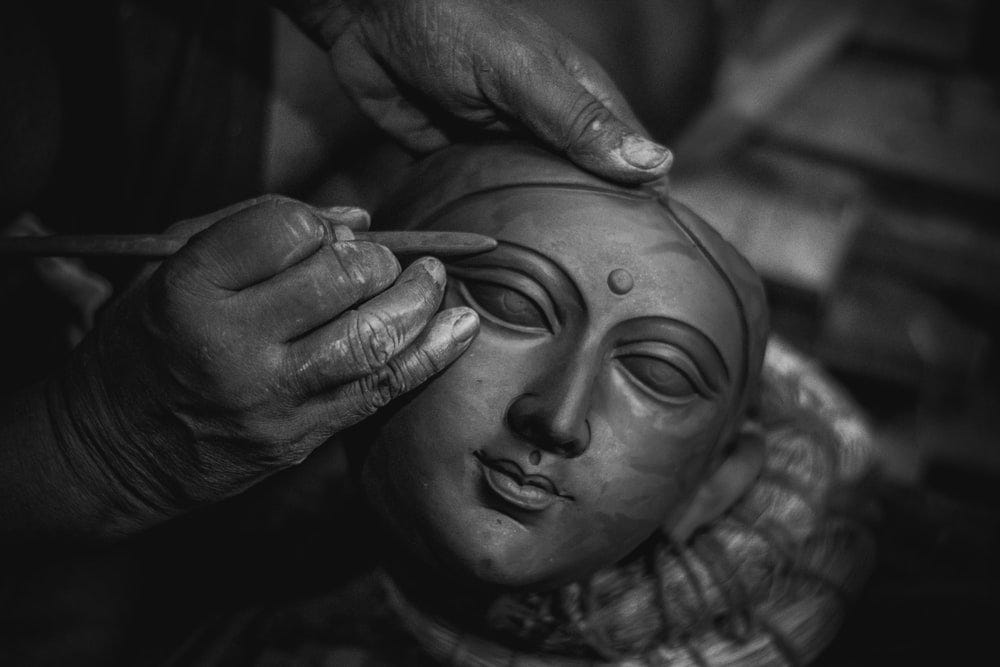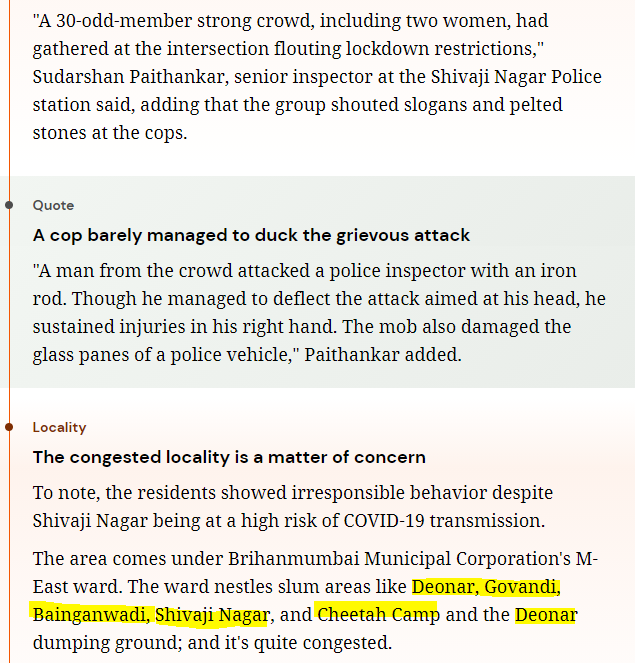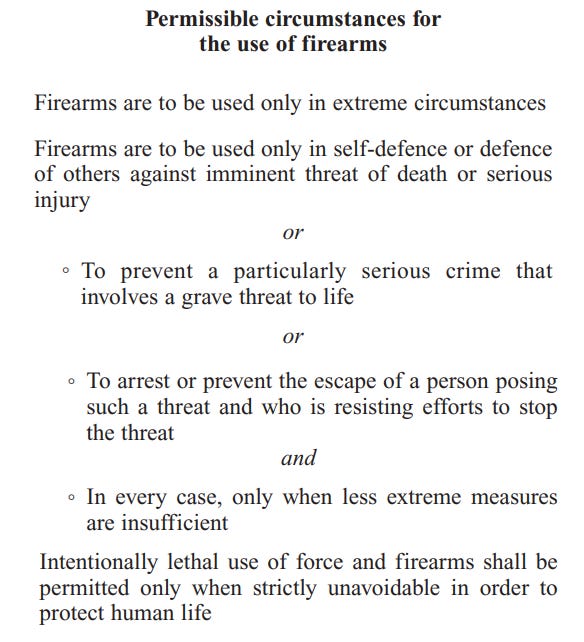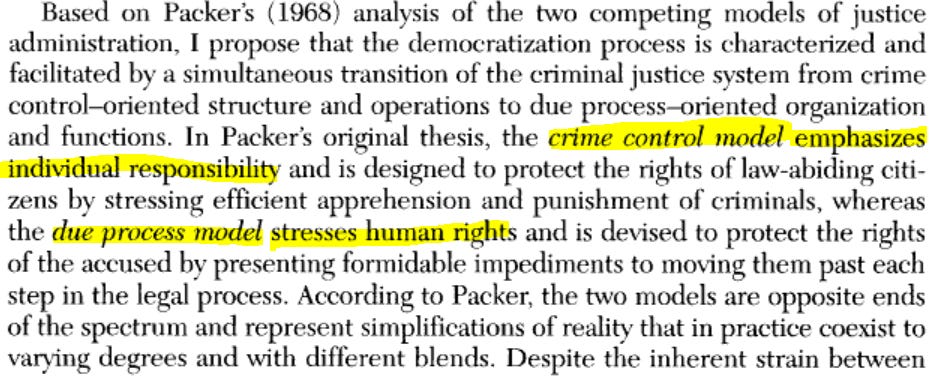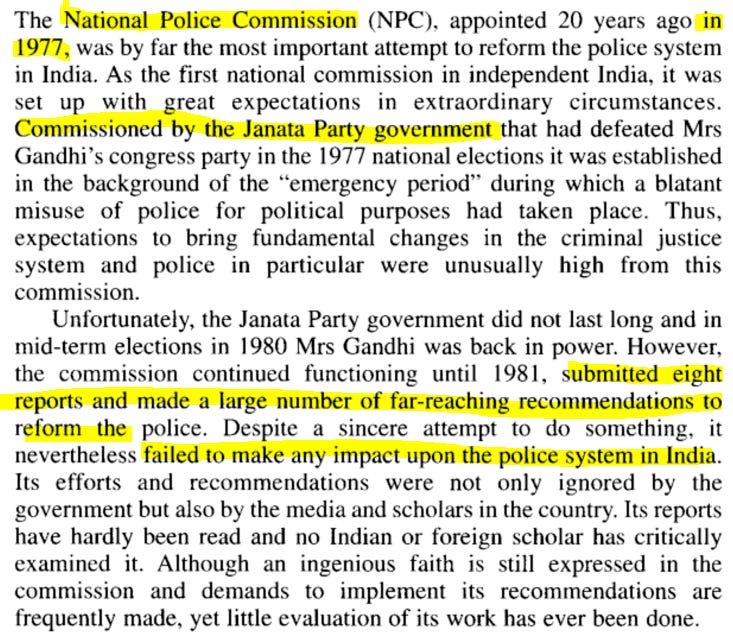Insightful newsletter of Drishtikone: Issue #282 - 21st Century Police with 1861 Laws!
India's misfortune is that its rulers have conspired against it. India is governed by laws made by the British to smother Indians post 1857! No reforms have been allowed by politicians since then!
Photo by SAUVIK BOSE on Unsplash
“Tell me who your heroes are and I’ll tell you how you’ll turn out to be.” ― Warren Buffett
There is no law without law enforcement. Law enforcement needs a force that is beyond the control of political masters and abuse of the terrorists and the violent. When criminals start dictating terms and carry out brutal attacks on the police, then a telling response is necessary for peace to exist. When police are weakened and crimes allowed to slide unanswered, anarchy and chaos is a natural consequence.
Accountability via laws is a critical part of governance. But the power of enforcement cannot and should not be compromised for a peaceful democratic society to exist.
Unfortunately, India has been brutalized by its own politicians.
Targeting Law enforcement forces - political strategy
In our previous newsletter (Issue #278 - The Naxal Curse), we had discussed how the over 400 Maoists in Chattisgarh had attacked the police and Central reserve forces and killed 23 law enforcement personnel.
In Saturday’s ambush, Maoists triggered blasts and then rained bullets and shells on the troops from well-camouflaged positions, inflicting heavy causalities. One of the survivors of the encounter said that they were attacked by over 400 Maoists from three sides. The ambush lines stretched over 2km near Tekulguda village. Running gunfights broke out near Tekulguda, Jonaguda and Jeeragaon villages as the forces fought back hard to break out of the ambush. (Source)
We had discussed how the backdrop of Maoist strategies is replete with literature to attack the state and police. It is part of the attempt to break down the state infrastructure, governance, and law enforcement forces’ will to bring order to the areas the Maoists want to overpower.
Here is how Mao has looked at the attacks on police - as a way to spite the state so the guerrillas could create sympathy amongst the population.
In 1937, Mao set his ideas out in a small book entitled “On Guerrilla Warfare." [Source:Asia for Educators, Columbia University, Primary Sources with DBQs, afe.easia.columbia.edu <|>]
The Red Army had a great deal of success by following tactics outlined in the following slogans: "When the enemy advances, we retreat. When the enemy halts and encamps, we harass him. When the enemy seeks to avoid battle, we attack. Whenever the enemy retreats, we pursue." The highly mobile Red Army attacked quickly with a sudden concentration of force and then quickly dispersed after the attack was over.
Large battles against forces that outnumbered them were avoided at all costs. Communists in unfriendly territory operated underground and in cells and through united front operations. When a military operation was taken it aimed to follow classic Maoist insurgency theory: overrun police outpost and remote military bases; let the state overreact with human rights abuses; capitalize on the resulting public anger over the abuses to gain support and win new recruits.
Mao was not a great military tactician but he was able to surround himself with talented military minds. He also realized that one of the greatest underutilized military assets was women. Jiang Jee was young female revolutionary who was killed in fighting the Nationalists and made into a martyr. (Source)
The problem is that attacks on police have become a very convenient tool in India. From the time of independence to now, the police have become progressively weak - pawns of the political establishment, sitting ducks with very few and outdated ammunition and vehicles, and worse, no real training to handle the growing threats of insurgents, terrorists, and mafia. As a reaction to the sad state of affairs, many have crafted ways that are often brutal (when they get an opportunity) involving torture and even custodial killings.
In Bengal yesterday, one SHO of Kishanganj, Ashwini Kumar was mob lynched along with others and killed.
According to officials, station house officer of the Kishanganj police station Ashwani Kumar led a police team to Pantapara village near Panjipara under Goalpokhar police station area Islampur district of West Bengal early on Saturday morning when a mob attacked them. A senior Bihar police official was allegedly lynched by a mob in Islampur police district West Bengal’s North Dinajpur district on Saturday when he was in the area to conduct a raid in connection with a motorcycle theft, officials said….According to officials, station house officer of the Kishanganj police station Ashwani Kumar led a police team to Pantapara village near Panjipara under Goalpokhar police station area Islampur district of West Bengal early on Saturday morning when a mob attacked them. Kumar, 50, died on the spot, the officials said. (Source)
In Cooch Behar, hundreds of people surrounded the troops who were guarding the polling station in the area. In a desperate attempt to save themselves from the mob, the paramilitary troops opened fire in self-defense.
"Paramilitary troops opened fire in self-defense after being challenged by over 400 people," a senior Election Commission official said, as reported by AFP. "They also formed a ring around the troops and tried to snatch rifles," the official was quoted as saying. "Four people were killed in the shooting," the official added. While giving a speech at an election rally in Siliguri, Prime Minister Narendra Modi said political opponent Mamata Banerjee "and her goons provoked the paramilitary forces to open fire." (Source)
But despite the obvious and explicit threat to the law enforcement agencies during election time, the ruling Bengal government chief chose to blame the forces - for only political point-scoring. A strategy, that she has perfected from the Communist regimes before her. (please read Issue #273 - Bengal's Redemption)
This deadly mob violence and attack against the law enforcement forces in Bengal and Maoist strongholds is something that is baked into the entire philosophy and strategy of the political/insurgent forces at play in these civilizational backwaters of India. (Bengal was once a progressive state. Now, it is a dungeon of poverty and violence) as we discussed in our newsletter cited above).
The election situation is such that Mamata Bannerjee’s goons are not afraid to kill people - to make an example of them - if they are found to be BJP supporters. All due to lack of police effectiveness and freedom from political abuse.

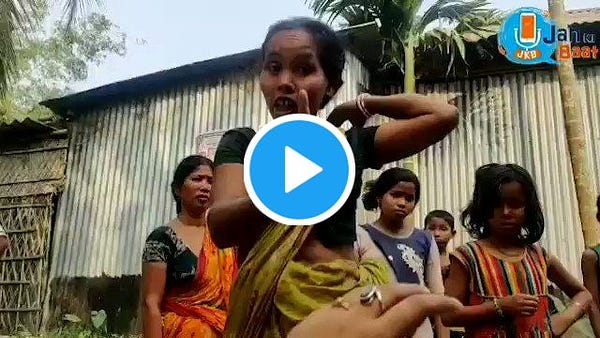
But attacks on police officials by mobs, often hired by political forces, is not a phenomenon of the backward areas in India like Chattisgarh and Bengal. It is a common phenomenon in the entire country.
Just last year in April 2020, a mob has attacked Mumbai Police cops in Shivaji Nagar with iron rods and other improvised weapons.
IN March 2020, in Delhi’s Chand Bagh, a mob (including Burkha-clad women) had attacked police officers during the whole anti-CAA drama. Head Constable Rattan Lal was killed in these attacks as well. (Source)
Here is another incident from West Bengal, where a mob burned down a police station over a land row. The violent public also beat up the cops in the station.
These are just some of the random incidents from around India where cops and law enforcement agencies become the target of mob attacks directed by political forces.
Is this a tenable situation?
Democracy without an effective police force
More importantly, can a democracy function when various unscrupulous elements and forces can unleash mob fury upon police and security forces and use any retaliation in self-defense as a “Human rights” issue?
What are the HR standards with respect to police and the use of punitive force? Human Rights Standards and Practices for the Police by the Office of the United Nations High Commissioner for Human Rights (Source - Download link)
Human rights laws and norms make it impossible for police to use punitive force. At most, they can use it in self-defense when absolutely necessary.
Even that little sliver of power to use for saving their lives and putting a “fear” of law in the minds of hardened terrorists and politically directed mobs, insurgents - is taken away by the various shenanigans employed by political masters.
They are just not allowed to even use that.
In 2009, the Human Rights Watch brought out a report on the Indian police scenario called "Broken System: Dysfunction, Abuse, and Impunity in the Indian Police.” It talked of the “human rights abuses” and excesses of police and also how the police force had become a puppet in the hands of the political machinery. The real thing - looking at the causes for such deterioration in a nuanced manner was never really attempted. It rarely is.
Colonial-era police laws enable state and local politicians to interfere routinely in police operations, sometimes directing police officers to drop investigations against people with political connections, including known criminals, and to harass or file false charges against political opponents. These practices corrode public confidence. (Source)
You see, there are two camps in the “thinkers” world. One, which posits the criminal justice (which includes police and security forces) system in a crime control model, where the individual is held responsible for following the laws, failing which s/he is accountable. And, the second is the due process model, where the rights of the accused are protected such that formidable impediments are presented while moving them through each step of the legal process. The reality falls in between the two.
A lot can be improved with proper policy, training and resources.
Police Laws - Created By British brutes against 1857 freedom fighters
The Indian Police Act 1861 is from the pre-independence era. In fact, it was brought into force as a measure in retaliation against the first war of Indian independence in 1857! The laws that were used by the colonial brutes against those whom they called mutineers, is still being used in India to govern the citizens of a free country!
The Indian Police Act of 1861 was legislated by the British right after the revolt of 1857 to bring in efficient administration of police in the country and to prevent any future revolts. This act has continued despite Indian being transformed from a British colony to a sovereign Republic. (Source)
Since then, any attempt to bring any meaningful change has been stalled and beaten down. The last - and probably the only real - attempt was made by the Janata Party in 1977 after they had defeated Indira Gandhi’s Congress post the emergency. They submitted 8 reports until 1981, when Indira Gandhi was back in power.
Nothing happened.
No one ever read the reports and no one has critiqued it.
Dr. Arvind Verma, former IPS and Assistant Professor at Indiana University explains the situation.
The other attempt was made by the Supreme Court of India in 2006 in Prakash Singh vs Union of India. The court gave 7 directives.
The seven directives were – setting up of State Security Commissions (SSC), fixing the tenure and selection of the DGP, a minimum tenure for the Inspector General of Police, separation of investigation and law and order functions, setting up of Police Establishment Boards, creating a Police Complaints Authority and forming a National Security Commission. (Source)
The implementation of even the Supreme court’s judgment has not been done!
How did states respond to these directives?
The Commonwealth Human Rights Initiative (CHRI), in its report on September 22, 2020 that tracked changes made in the police force following the 2006 judgment, found that not even one state was fully compliant with the apex court directives and that while 18 states passed or amended their Police Acts in this time, not one fully matches legislative models. (Source)
Quite obviously the politicians never cared for the most important part of the Indian governance system. Without a robust criminal justice system, no democracy can really function.
Modernization of the police force
The utilization of police forces’ modernization budget is only around 48% of the available funds. Why? Because the State Governments do not release funds that they need to in order to match the central government grants.
“The central government releases grants for modernisation, which the state has to match,” MN Singh, former Police Commissioner of Mumbai, told IndiaSpend. “States don’t always release modernisation funds. This needs to be changed.” (Source)
Police are a state subject!
That just means one thing - the State Government does not want strong and effective police. It wants a police force that is mere cannon-fodder.
The result is that the police force has a pathetic situation to deal with.
As a result, police forces across India lack weapons and fundamental communications and transport infrastructure – 267 police stations had no telephones and 129 had no wireless communication devices as of January 2017, as per the latest available data from the Bureau of Police Research and Development. There were eight vehicles for every 100 police personnel for responding to distress calls, patrolling and maintaining law and order in their jurisdictions. The number of police stations functioning without wireless communication devices across India increased by 231% from 39 in 2012 to 129 by the end of 2016. At the beginning of 2017, 273 police stations across the country did not possess a single transportation vehicle. (Source)
How do these police stations even function?!
Some measures are being taken for modernization by the current government but they are not enough (Source). Nothing can change substantively unless the laws governing the Police themselves are changed from those made in 1857 to ones that address contemporary issues.
market corner: 10 quick bytes
Bitcoin bombshell: Crypto king may pole vault to eye popping $400k mark this year with over 6x growth - more
Govt approves Rs 726 cr highway projects in Madhya Pradesh - more
Centre approves Rs 1,210 cr highway projects in Uttarakhand - more
India bans exports of anti-viral drug Remdesivir as COVID-19 cases surge - more
Covid restrictions: 30% business loss in one week due to fresh curbs, says traders’ body CAIT - more
SBI collects Rs 300 cr from zero balance accounts for certain services in 5 years: Study - more
Speciale Invest raises Rs 120 cr as part of new fund for early-stage startups - more
Govt may hike FDI limit in pension sector to 74% - more
Area under summer crops up by 16.4% from last year - more
FPIs pull out Rs 929 cr from Indian markets so far in April - more
nota bene
Teeka Utsav: In a bid to vaccinate more people on priority, India’s Prime Minister, Narendra Modi, has launched 'Teeka Utsav' around the country to inoculate the maximum number of people against the deadly coronavirus. The mass vaccination program will continue from April 11 to 14 and the PM has urged all Chief Ministers to monitor the situation closely. (Source)
Mamata’s call for mass violence: Union Home Minister Amit Shah is scheduled to conduct six public programs in poll-bound West Bengal on Sunday. After one such public rally in Santipur, Amit Shah while giving a byte to the media launched a blistering attack on West Bengal CM Mamata Banerjee over the violence in the state yesterday. While talking about the unfortunate violence in Cooch Behar where 4 people lost their lives in firing by CISF, Shah questioned, “I want to ask Mamta Banerjee, is your speech not responsible for the death of those 4 people?” (Source)
Chinese peace or threat?: With no forward movement at the latest round of Sino-India military talks on disengagement from the remaining areas in eastern Ladakh, the Chinese military has said that India should cherish the "current positive trend" of de-escalation and cooling down of tensions in the border area. A day after the 11th round of Corps Commander-level talks that lasted for 13 hours, the Indian Army said in a statement on Saturday that both sides held a detailed deliberation on the disengagement of troops in the remaining friction points of Hot Springs, Gogra, and Depsang in eastern Ladakh and agreed to jointly maintain stability on the ground, avoid any new incidents and resolve the outstanding issues in an "expeditious manner". (Source)
US transgression without permission: India protested to the United States for a navy vessel conducting a transit through its exclusive economic zone (EEZ) without consent, the foreign ministry said on Friday, in a rare row between the friendly navies of the two countries. The USS John Paul Jones "asserted navigational rights and freedoms," inside India's EEZ in line with international law by sailing about 130 nautical miles (241 km) west of India's Lakshadweep islands, the U.S. Seventh Fleet said in a statement on Wednesday. (Source)
Tiny Particle could change science: Evidence is mounting that a tiny subatomic particle seems to be disobeying the known laws of physics, scientists announced on Wednesday, a finding that would open a vast and tantalizing hole in our understanding of the universe. The result, physicists say, suggests that there are forms of matter and energy vital to the nature and evolution of the cosmos that are not yet known to science. The new work, they said, could eventually lead to breakthroughs more dramatic than the heralded discovery in 2012 of the Higgs boson, a particle that imbues other particles with mass. (Source)
video corner: Mohenjo Daro - what it was and its current state
This is an extremely informative video. Knew a lot but it brought information from the current state in Pakistan, where the sites are. It is in Urdu/Hindi - but because of its content, I just had to include it.
Today’s ONLINE PAPER: Check out today’s “The Drishtikone Daily” edition. - THE DRISHTIKONE DAILY
Nuzzle Tweets “newsletter” - with tweets and stories that we read and follow in a day in one compilation on a daily basis - Nuzzle Drishtikone - just another way to keep up with things
SUPPORT DRISHTIKONE: If you consider our work important and enriching and would like to contribute to our expenses, please click on the button below to go to the page to send in your contribution. You can select the currency (for example, INR or USD, etc) and the amount you would like to contribute. Contribute to Drishtikone
If you like this post - please share it with someone who will appreciate the information shared in this edition
If you like our newsletter, please share it with your friends and family




